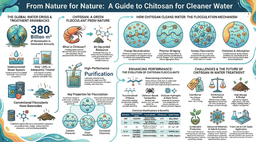From the MOSAiC sea-ice drift: Genome-resolved Metagenomics of the central Arctic Ocean
Published in Ecology & Evolution, Microbiology, and Genetics & Genomics

The central Arctic Ocean is one of the most inaccessible environments on Earth due to sea-ice coverage and extreme environmental conditions especially in winter where temperatures can be well below the freezing point for a considerable amount of time. However, the central Arctic Ocean is one of the key environments for regulating climate on Earth. Due to the impact of human activity, it is also one of the most threatened ecosystems where temperatures rise faster than anywhere else on Earth [1]. This is not only impacting the physical environment such as the thinning and retreating of sea ice and glaciers of Greenland, but it also influences Arctic biomes [2], which have evolved over more than five million years to the harsh environmental conditions [3]. The expected long-term consequence under a business-as-usual scenario is a significant loss of Arctic biodiversity, which eventually might be replaced by invasive species from sub-Arctic regions such as the North Atlantic [4]; this process in the marine system is coined ‘Atlantification’ of the Arctic Ocean.
The MOSAiC ice-drift expedition took place between 2019 and 2020 [5] to study the changes and pressures placed on this unique environment due to the accelerated global warming taking place at the poles. For general information about the expedition, please visit https://mosaic-expedition.org/. Our team (EcoOmics) of more than 100 scientists from more than five nations was funded to benchmark the microbial diversity of the central Arctic Ocean for an entire year including the long polar winter from floating sea ice to the deep sea. Due to an immense international logistical effort including the support of a few ice-breaking research vessels of which RV Polarstern was the main research platform for about 12 months, MOSAiC was unprecedented. Sampling for DNA was done under almost unreal conditions such as temperatures below -30oC and complete darkness (see poster image). Hence, it was challenging to obtain a sufficient quantity and quality of DNA and RNA from environmental samples especially from sea ice, which sometimes required ice-core drilling in complete darkness. Nevertheless, over 1000 samples have been obtained from the central Arctic Ocean for sequencing at the Joint Genome Institute (JGI) in California, USA. This sequencing effort has only recently been completed, and our paper only provides the first glimpse into what is to be expected over the coming years in terms of genome-resolved metagenomics and transcriptomics from the central Arctic Ocean [6]. Making these data available as early as possible even before a main results paper is published is essential because of how fast the Arctic is changing including the diversity of its inhabitants [7]. We have focused on oceanic microbes as they not only underpin the entire Arctic food web and important climate-relevant cycles of carbon and other essential elements, but they also serve as a bellwether and therefore likely can be used as indicators for environmental change [8].
Our paper [7] provides the first Metagenome-Assembled Genomes (MAGs) from the central Arctic Ocean. This set also includes genomes from eukaryotic microbes such as protists. The latter group of organisms is not only highly diverse and represents main contributors to polar primary production, but they are also underrepresented in ocean metagenomics studies. One reason is their genome size and genomic complexity, which requires more sequencing effort to retrieve their genomes from ocean metagenomes. However, the JGI-funded project allows us to achieve that goal due to higher sequencing depth per sample. An exemplar of this effort has been publicly released recently: A high-quality diatom MAG (73% completeness and 0.4% contamination). This 'genome' has a size of 32.07 Mbp and contains 13,169 genes. The most closely related genome in Phycocosm was the diatom Pseudo-nitzschia multiseries CLN-47, with an average nucleotide identity of 76%. This diatom MAG has been completely annotated and can be accessed via https://phycocosm.jgi.doe.gov/Mosaich1_1/Mosaich1_1.home.html
Thus, this case study provides evidence that more of these protist MAGs can be retrieved from our metagenomes, which will contribute to shed light on the genomic diversity of microbial eukaryotes in one of the least studied ecosystems on Earth. Our paper also reports on MAGs from other eukaryotic groups such as Kinetoplastida and Sporidiobolacae. The former is a group of flagellated protists, and the latter is an order of fungi. First scans of our metagenomes also revealed the presence of giant viruses (e.g., Phycodnaviridae as part of the Nucleocytoviricota). Their diversity and interaction with eukaryotic hosts is currently being investigated in our group in collaboration with colleagues at JGI including Tanja Woyke and Frederik Schulz.
This work together with prokaryotic MAGs and diverse viral MAGs isolated from the central Arctic Ocean by colleagues in Norway, will be used to reveal how the Arctic Ocean from the surface (sea ice) to the deep sea has shaped interactions between microbes and their metabolism under some of the most extreme conditions on Earth.
References:
[1] Rantanen, M. et al. The Arctic has warmed nearly four times faster than the globe since 1979. Commun. Earth Environ. 3, 168 (2022). https://www.nature.com/articles/s43247-022-00498-3
[2] Berner, L.T., Massey, R., Jantz, P. et al. Summer warming explains widespread but not uniform greening in the Arctic tundra biome. Nat Commun 11, 4621 (2020). https://doi.org/10.1038/s41467-020-18479-5
[3] Ye, N., Han, W., Toseland, A. et al. The role of zinc in the adaptive evolution of polar phytoplankton. Nat Ecol Evol 6, 965–978 (2022). https://doi.org/10.1038/s41559-022-01750-x
[4] Chan FT, Stanislawczyk K, Sneekes AC, Dvoretsky A, Gollasch S, Minchin D, David M, Jelmert A, Albretsen J, Bailey SA. Climate change opens new frontiers for marine species in the Arctic: Current trends and future invasion risks. Glob Chang Biol 25(1), 25-38 (2019). https://doi.org/10.1111/gcb.14469
[5] Fong, AA, Hoppe, CJM, Aberle, N, Ashjian, CJ, Assmy, P, Bai, Y, Bakker, DCE, Balmonte, JP, Barry, KR, Bertilsson, S, Boulton, W, Bowman, J, Bozzato, D, Bratbak, G, Buck, M, Campbell, RG, Castellani, G, Chamberlain, EJ, Chen, J, Chierici, M, Cornils, A, Creamean, JM, Damm, E, Dethloff, K, Droste, ES, Ebenhöh, O, Eggers, SL, Engel, A, Flores, H, Fransson, A, Frickenhaus, S, Gardner, J, Gelfman, CE, Granskog, MA, Graeve, M, Havermans, C, Heuzé, C, Hildebrandt, N, Hill, TCJ, Hoppema, M, Immerz, A, Jin, H, Koch, BP, Kong, X, Kraberg, A, Lan, M, Lange, BA, Larsen, A, Lebreton, B, Leu, E, Loose, B, Maslowski, W, Mavis, C, Metfies, K, Mock, T, Müller, O, Nicolaus, M, Niehoff, B, Nomura, D, Nöthig, E-M, Oggier, M, Oldenburg, E, Olsen, LM, Peeken, I, Perovich, DK, Popa, O, Rabe, B, Ren, J, Rex, M, Rinke, A, Rokitta, S, Rost, B, Sakinan, S, Salganik, E, Schaafsma, FL, Schäfer, H, Schmidt, K, Shoemaker, KM, Shupe, MD, Snoeijs-Leijonmalm, P, Stefels, J, Svenson, A, Tao, R, Torres-Valdés, S, Torstensson, A, Toseland, A, Ulfsbo, A, Van Leeuwe, MA, Vortkamp, M, Webb, AL, Zhuang, Y, Gradinger, RR. 2024. Overview of the MOSAiC expedition: Ecosystem. Elementa: Science of the Anthropocene 12 (1) DOI: https://doi.org/10.1525/elementa.2023.00135.
[6] Mock T, Boulton W, Balmonte J-P, Barry K, Bertilsson S, Bowman J, et al. (2022) Multiomics in the central Arctic Ocean for benchmarking biodiversity change. PLoS Biol 20(10): e3001835. https://doi.org/10.1371/journal.pbio.3001835
[7] Boulton, W., Salamov, A., Grigoriev, I.V. et al. Metagenome-assembled-genomes recovered from the Arctic drift expedition MOSAiC. Sci Data 12, 204 (2025). https://doi.org/10.1038/s41597-025-04525-8
[8] Clark, M.S., Hoffman, J.I., Peck, L.S. et al. Multi-omics for studying and understanding polar life. Nat Commun 14, 7451 (2023) https://doi.org/10.1038/s41467-023-43209-y
Follow the Topic
-
Scientific Data

A peer-reviewed, open-access journal for descriptions of datasets, and research that advances the sharing and reuse of scientific data.
Related Collections
With Collections, you can get published faster and increase your visibility.
Data for crop management
Publishing Model: Open Access
Deadline: Jan 17, 2026
Computed Tomography (CT) Datasets
Publishing Model: Open Access
Deadline: Feb 21, 2026




Please sign in or register for FREE
If you are a registered user on Research Communities by Springer Nature, please sign in